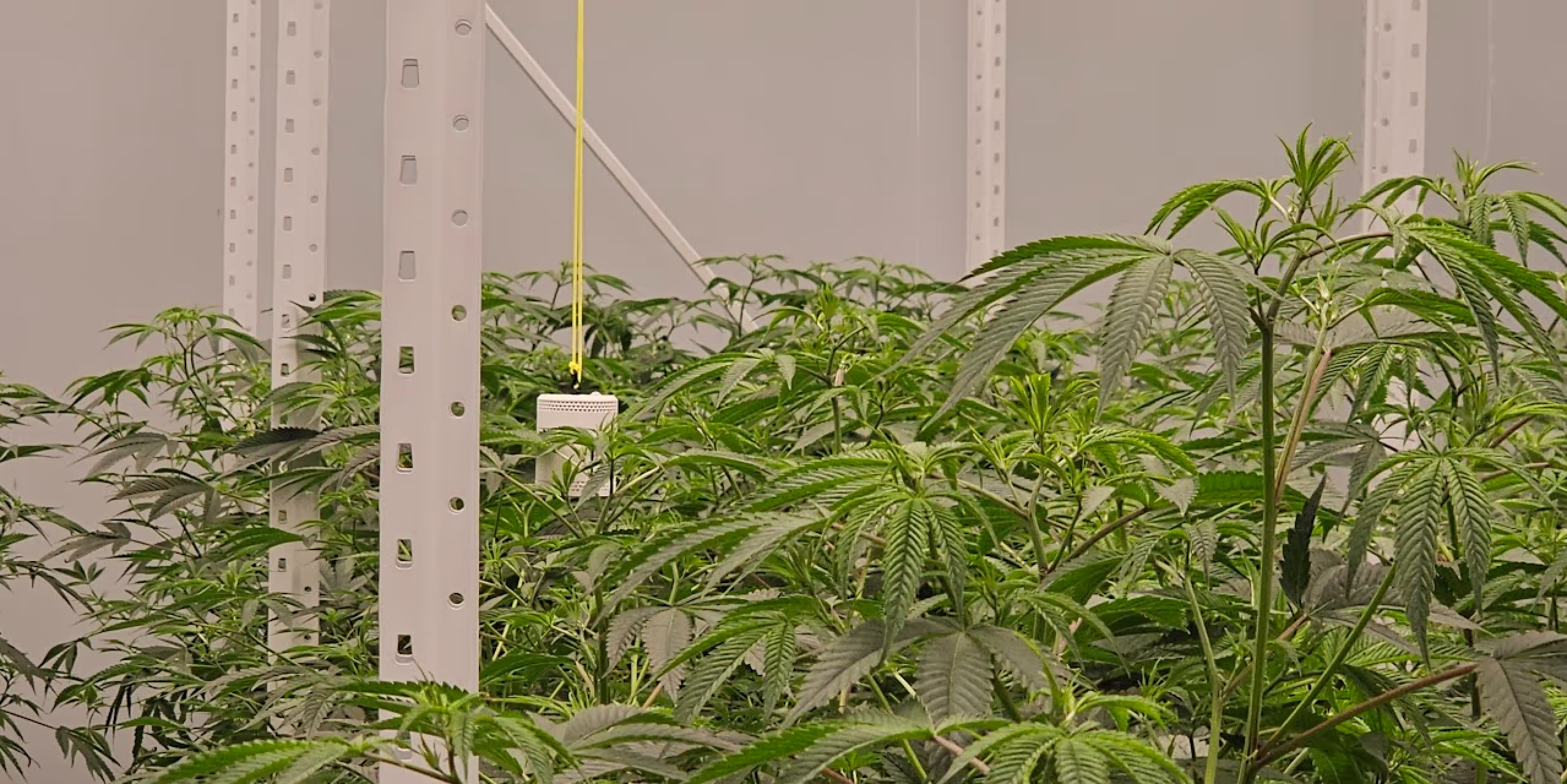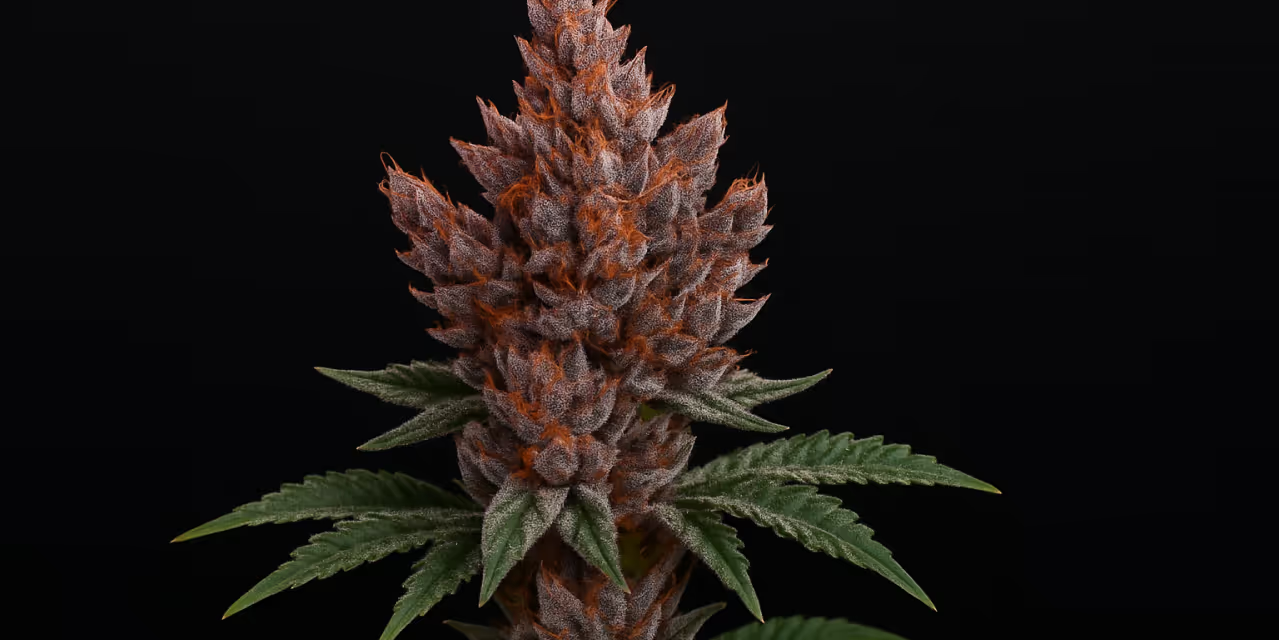Pruning cannabis for maximum yield: when and how explained


Pruning cannabis is more than just trimming a few leaves.
It's an essential practice to boost your plants' yield, health, and overall growth.
Whether you're a new grower or have experience in cannabis cultivation, understanding when and how to prune marijuana plants for maximum yield can make all the difference in achieving a bumper, potent harvest.
In this guide, we’ll cover the best times to prune, the most effective methods for proper pruning, and practical tips to help you get the most out of every plant.
Disclaimer: Any information given on this site is for educational purposes only. Please ensure if you’re growing cannabis, you’re doing so by the law and subject to appropriate permissions and licenses of the applicable country.
Why pruning is crucial for your cannabis
Pruning your cannabis is key to maximising yields and promoting healthy growth.
When you prune cannabis, you remove specific parts of the plant to direct its dedication and energy towards the most productive branches and more bud sites.
This helps increase light exposure and air circulation while preventing nutrient deficiencies by ensuring the plant's energy is focused on developing larger, more potent buds.
If you have topped your cannabis plant, you might be left with many stems.
Pruning some of these branches and removing surplus fan leaves allows more light to penetrate the canopy, helping your plants grow larger buds to maximise yields.
Most growers find that the strategic removal of unnecessary growth also reduces the chances of mould and pests that thrive in dense foliage.

When to start pruning cannabis plants for best results
Ideally, you want to be pruning cannabis during the veg stage of growth. The period when your plants are primarily focused on growing leaves and branches.
During this stage, your cannabis plants are robust and can handle the stress associated with pruning.
Begin pruning cannabis once the plant has developed a few sets of true leaves (at least 3-5 nodes), ensuring it is strong enough to recover from the cuts.
Avoid pruning marijuana plants during the flowering stage — this is when the plant focuses all its energy on bud production.
Pruning at this time can shock the plant and slow down bud development, resulting in lower yields.
The exception to this rule is light pruning during the early parts of the flowering stage, where you might remove some low branches or leaves that don’t get enough light.
This technique, often called "lollipopping," helps the plant direct its energy towards the upper branches, where buds will likely get the most light.
Signs that it’s time to start to prune cannabis plants are when you notice overcrowding, yellowing leaves, or reduced airflow around the plant and:
- The plant is in the vegetative stage and has strong growth.
- The lower branches are not getting adequate light.
- The canopy is dense, restricting airflow and light.

How to prune cannabis: Step-by-step techniques
Now that you know when to prune, let’s go over the best cannabis pruning techniques and pruning methods to help you maximise your yield:
1. Gather your tools
Use sharp, clean cannabis pruning scissors or pruning shears to reduce the risk of damaging the plant or introducing diseases.
Blunt tools can cause tearing, which makes it harder for the plant to heal.
2. Start with dead or yellowing leaves
Begin the pruning process by removing any dead leaves or yellow leaves, especially those at the bottom, with your pruning shears.
These leaves do not contribute to the energy production of the plant and can harbour pests or diseases. Removing damaged or dying cannabis leaves, enables healthy leaves to do their job.
3. Focus on lower branches
Remove branches from lower down the plant that are not receiving enough light.
This step ensures the plant's energy is directed towards the top branches, where bud sites will benefit from more light and air.
4. Trim close to bud sites
Be careful when pruning near buds. Make a clean cut close to the sites where the buds grow, but avoid cutting them off.
The aim is to allow more energy to reach these buds for better development without damaging them.
5. Shape the canopy
To maximise light availability, remove any fan leaves or branches blocking light to the lower parts of the plant. A well-shaped canopy improves airflow and helps prevent mould.
6. Monitor and adjust
Pruning for higher yield isn’t a one-time process. Continuously monitor your plants, and make small adjustments with careful cutting as necessary to ensure optimal light availability and airflow.
Unlock premium growing secrets – join the Grow The Best newsletter!

Advanced cannabis pruning techniques
Once you're comfortable with the basics, you can explore advanced pruning techniques to enhance your plants' potential further:
Topping and fimming
These high-stress techniques involve cutting the main stem to encourage the plant to grow multiple colas on larger branches, which can significantly increase yields.
Topping involves cutting the main stem's tip to create two new branches.
Fimming is a similar method but removes a smaller portion, promoting bushier growth.
Lollipopping
This involves removing the lower branches and small branches of the plant at the beginning of the flowering stage.
The goal is to concentrate the plant's energy and growth hormones on the upper, more productive branches.
Lollipopping can help maximise yields by directing the plant's resources to the buds most likely to thrive.
Low-Stress Training (LST)
Gently bend and tie down branches shooting up to help spread out the plant, increasing light exposure to all parts of the plant.
Combining LST with pruning can stimulate growth, leading to more budding areas and larger, healthier buds.

Common mistakes to avoid when pruning cannabis
Pruning a cannabis plant can significantly boost your yield, but it's easy to make mistakes that could harm your plants.
Here are a few pitfalls to avoid:
Over-pruning or excessive pruning
Cutting away too much foliage can shock and hinder the plant’s development.
Aim to prune just enough to improve light penetration and airflow without removing too much of the plant’s structure.
Pruning too late in the flowering stage
Once you’ve got mature plants, in later flowering, pruning can do more harm than good.
At this stage, the plant's energy should be focused solely on bud development.
Cutting too close to the budding areas
Be careful not to damage the actual budding sites of the plant while pruning.
Always leave a bit of space around these areas to ensure they can absorb light and nutrients effectively.
Ignoring plant health
Always assess the overall plant health before pruning.
If your plants show signs of nutrient deficiencies or stress, give them time to recover before cutting.

Complementary cannabis pruning and training techniques
To truly maximise your yields, consider combining pruning with other techniques:
Screen of Green (SCROG)
This method uses a screen or Scrog net to create an even canopy, ensuring all buds receive adequate light.
Combined with pruning, SCROG and Sea of Green (SOG) can help increase light availability to all potential budding sites.
Defoliation
Removing some fan leaves can improve airflow and light penetration, but be careful not to remove too many at once, as vigorous defoliation could stress the plant.
Tools and nutrients for post-pruning care
After pruning, it’s crucial to provide a pruned plant with the right care to promote recovery:
Consider using a vitamin B complex fertiliser to help reduce stress and promote faster healing after pruning.
This is especially useful for plants that have undergone more aggressive pruning.
Ensure your plants get adequate nitrogen, phosphorus, and potassium, especially during the vegetative stage.
These nutrients are essential for supporting healthy growth and recovery from pruning.

Takeaways
Pruning cannabis is an essential practice for any grower aiming for maximum yield.
By carefully timing your pruning, using the right techniques, and avoiding common mistakes, you can help your plants reach their full potential.
Remember, it’s all about balance — prune just enough to shape and guide your plants without overdoing it.
With dedication and the right care, you’ll see your plants grow stronger and your harvests increase in yield and quality.
Happy growing!
FAQs
- How often should you prune weed plants? Focus on a few key pruning sessions during the vegetative stage. Avoid pruning a weed plant once flowering has fully commenced to prevent stunting bud production.
- What’s the right amount to prune weed plants? Prune marijuana just enough to enhance light penetration and air circulation. Removing too much can shock the plant and trigger early flowering, so find a healthy balance.
- What If you make a mistake? Don't panic! Cannabis plants are resilient. If you cut too much, give your weed plant time to recover, and it will often bounce back with a little extra care.
Get expert growing advice – sign up for the Grow The Best newsletter now!









.avif)








